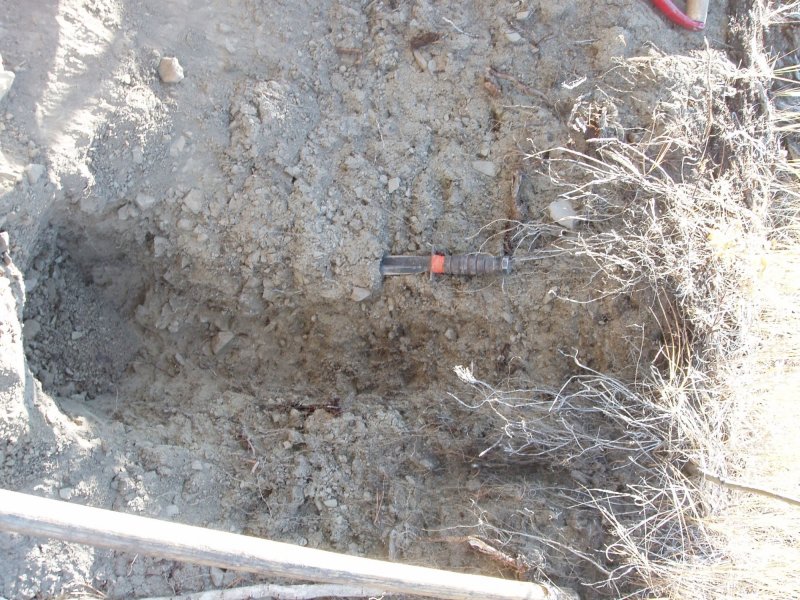Ecological dynamics
The Upland Aspen Woodland ecological group is being developed to cover a very broad range of climate, topographic and geographic differences. The ecological dynamic for this site is very similar across each of these ranges, and the major differences are shifts in the companion species found in each of the communities. There has been a significant level of information gathered and research completed on these Aspen community dynamics, these references are noted. The role of fire, utilization by large ungulates (including livestock), and the nature of Aspens themselves creates a unique community dynamic.
State 1
Reference: Aspen Stand
Aspens serve as key habitat within the conifer forest ecosystem. Their ability to colonize on the landscape with a strong herbaceous under story serves as a forage source, shelter and aesthetic view point. This state is the reference state, with an Aspen dominated over story and a native, herbaceous under story.
Characteristics and indicators. The dominance of aspen trees in this community with a strong native under story and minimal composition of conifer species (less than 5 percent) are the signature characteristics of this State. This state does not provide for non-native species in the reference 1.1 community, but it is generally understood that it is difficult to find communities that have a zero composition of non-native invaders (Kentucky bluegrass, smooth brome, timothy).
Resilience management. Aspens are a delicate species, but overall are resilient and able to recover given time and management. Their ability to clone themselves, and rhizomatous nature assist in their perseverance on the landscape. however, they are susceptible to disease and insects which does inhibit them to some degree. Fire and grazing are both tools for management but also are an impact to this plant community
Dominant plant species
-
quaking aspen (Populus tremuloides), tree
-
common juniper (Juniperus communis var. depressa), shrub
-
Woods' rose (Rosa woodsii), shrub
-
mountain snowberry (Symphoricarpos oreophilus), shrub
-
mountain big sagebrush (Artemisia tridentata ssp. vaseyana), shrub
-
russet buffaloberry (Shepherdia canadensis), shrub
-
pinegrass (Calamagrostis rubescens), grass
-
Geyer's sedge (Carex geyeri), grass
-
Letterman's needlegrass (Achnatherum lettermanii), grass
-
California brome (Bromus carinatus), grass
-
western coneflower (Rudbeckia occidentalis), other herbaceous
-
heartleaf arnica (Arnica cordifolia), other herbaceous
-
timber milkvetch (Astragalus miser), other herbaceous
-
plantainleaf buttercup (Ranunculus alismifolius), other herbaceous
Dominant resource concerns
Community 1.1
Reference: Aspen/Herbaceous - Single Story
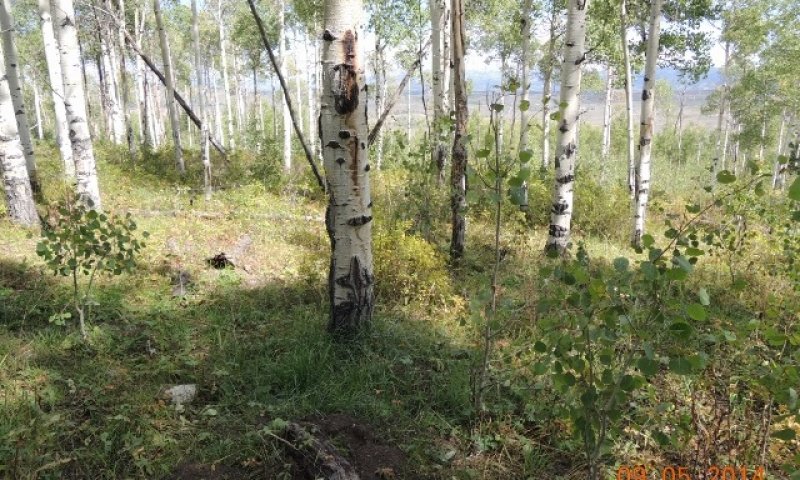
Figure 8. Aspen/Herbaceous Community Phase with a few sapling aspen present in the under story.
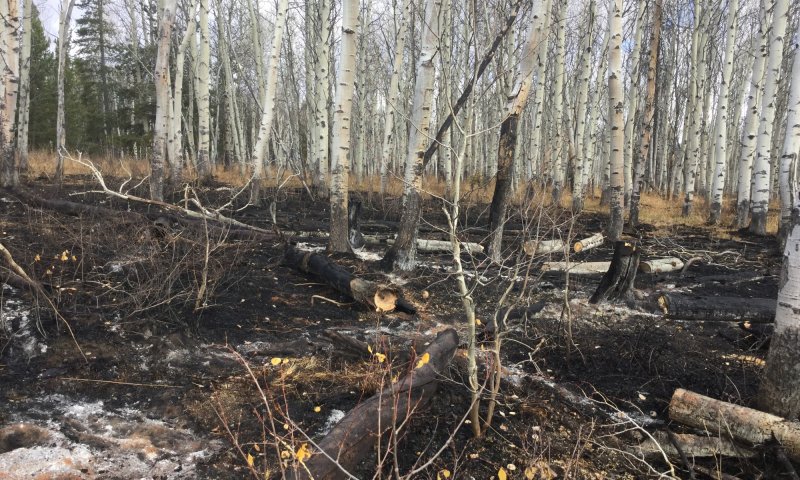
Figure 9. Aspen/Herbaceous Community Phase following an intense fire.
The reference community is Aspen over story with a herbaceous under story. In the Aspen over story, the trees are single story canopy with an even-aged stand. The trees are decadent to some degree, and range in age from 80 to 125 years old or older. Some aspen sprouts are present, but are minor in the canopy. The over story canopy is between 80 to 90 percent.
Resilience management. The decadence of this stand reduces the resiliency of the canopy, but with the presence of samplings, the stand is able to recover if impacts. The old growth trees are more susceptible to disease and insect damage.
Dominant plant species
-
quaking aspen (Populus tremuloides), tree
-
common juniper (Juniperus communis var. depressa), shrub
-
mountain big sagebrush (Artemisia tridentata ssp. vaseyana), shrub
-
western snowberry (Symphoricarpos occidentalis), shrub
-
pinegrass (Calamagrostis rubescens), grass
-
Geyer's sedge (Carex geyeri), grass
-
California brome (Bromus carinatus), grass
-
western coneflower (Rudbeckia occidentalis), other herbaceous
-
heartleaf arnica (Arnica cordifolia), other herbaceous
-
common cowparsnip (Heracleum maximum), other herbaceous
-
mule-ears (Wyethia amplexicaulis), other herbaceous
Community 1.2
Herbaceous/Aspen
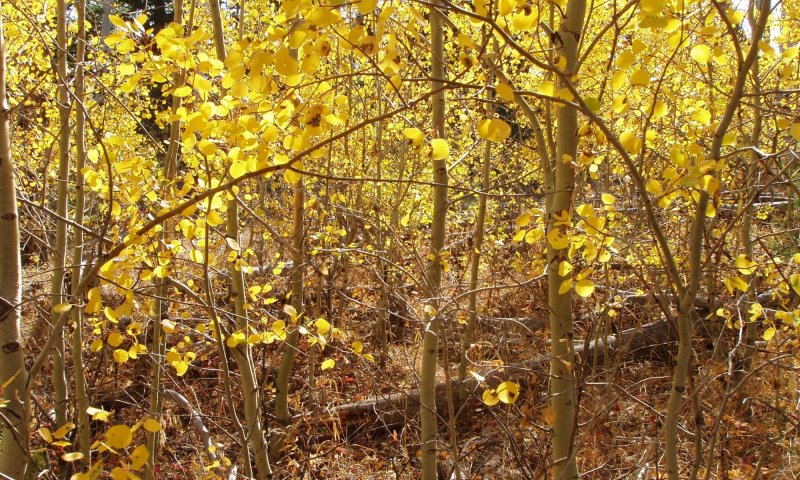
Figure 10. A herbaceous under story with aspen sprouts increasing in the community phase.
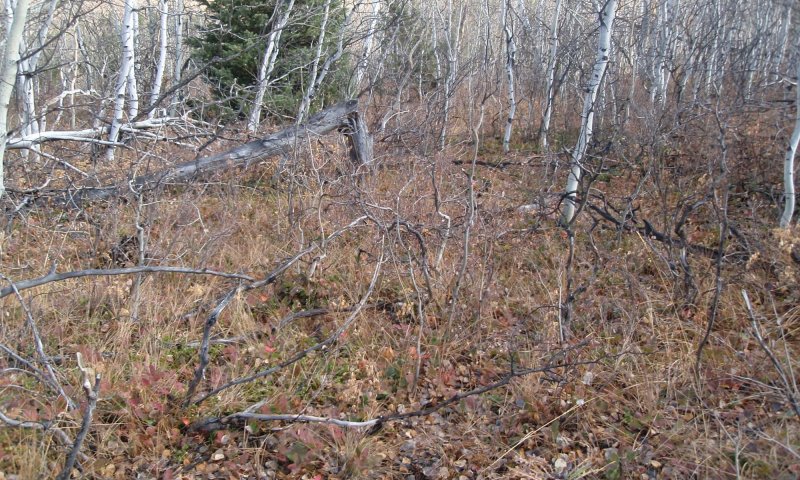
Figure 11. Herbaceous/Aspen Community Phase with sapling aspen present but not densely populated.
The Herbaceous/Aspen Community Phase is predominantly a herbaceous under story with an over story of aspen sprouts (saplings). The tree canopy is generally less than 20 percent but is variable. The range in age of the tree stand is one to 25 years old. This stand is susceptible to herbivory impacts by wildlife and livestock. The under story is comprised of forbs and grasses with a few shrubs.
Resilience management. This community is young and resilient to most minor disturbances. Fire and insect/disease threats are low. However, grazing can be detrimental to the maturation potential of this stand.
Dominant plant species
-
quaking aspen (Populus tremuloides), tree
-
mountain big sagebrush (Artemisia tridentata ssp. vaseyana), shrub
-
common juniper (Juniperus communis var. depressa), shrub
-
russet buffaloberry (Shepherdia canadensis), shrub
-
pinegrass (Calamagrostis rubescens), grass
-
Letterman's needlegrass (Achnatherum lettermanii), grass
-
California brome (Bromus carinatus), grass
-
silvery lupine (Lupinus argenteus), other herbaceous
-
timber milkvetch (Astragalus miser), other herbaceous
-
western coneflower (Rudbeckia occidentalis), other herbaceous
Community 1.3
Aspen Sprouts
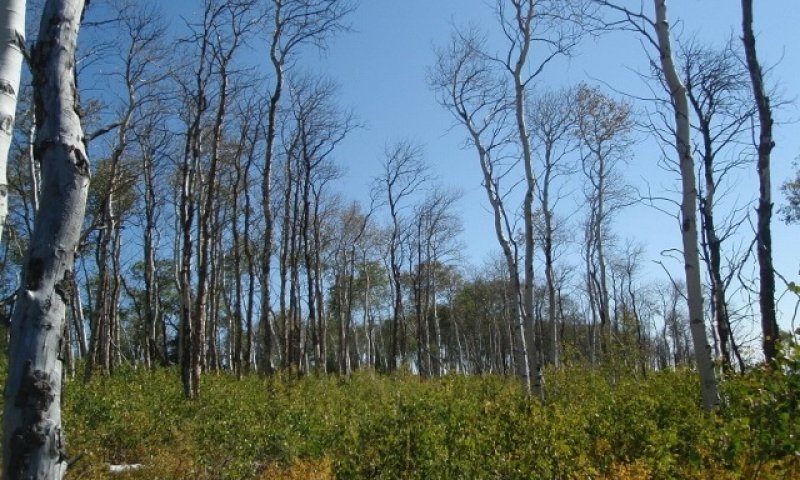
Figure 12. Over story of standing dead aspen with a young, dense stand of aspen sprouts below.
The Aspen Sprouts community phase is characterized by the dense canopy of young aspen samplings with a slightly decreased herbaceous under story. the tree canopy is generally all young aspen trees in age from one to ten years old. The canopy cover can range from 70 to 100 percent, reducing the diversity of under story species as well.
Resilience management. This canopy is generally short lived as the trees become stressed and are susceptible to disease and insect damage. Density of the tree stand reduces the threat of herbivory, although there is still impact by browsing/grazing on the canopy. In comparison to other communities, this is till higher in resiliency than old growth stands, but is less resistant to change.
Dominant plant species
-
quaking aspen (Populus tremuloides), tree
-
western snowberry (Symphoricarpos occidentalis), shrub
-
russet buffaloberry (Shepherdia canadensis), shrub
-
creeping barberry (Mahonia repens), shrub
-
pinegrass (Calamagrostis rubescens), grass
-
Geyer's sedge (Carex geyeri), grass
-
California brome (Bromus carinatus), grass
-
western coneflower (Rudbeckia occidentalis), other herbaceous
-
plantainleaf buttercup (Ranunculus alismifolius), other herbaceous
-
Fendler's meadow-rue (Thalictrum fendleri var. fendleri), other herbaceous
Community 1.4
Aspen/Herbaceous - Multi-story

Figure 13. Aspen/Herbaceous Community Phase with an Old stand aspen canopy and a dominance of aspen sprouts present in the under story.
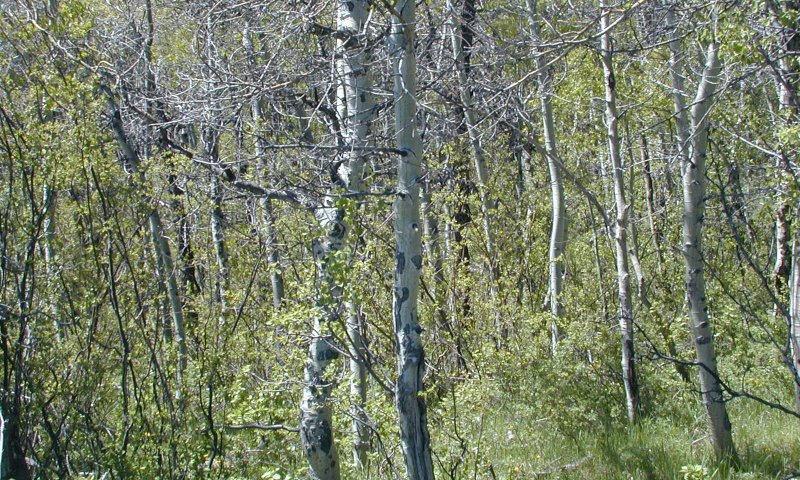
Figure 14. Aspen/Herbaceous Community Phase with less prominent old stand aspen canopy with a dominant strata of aspen sprouts.
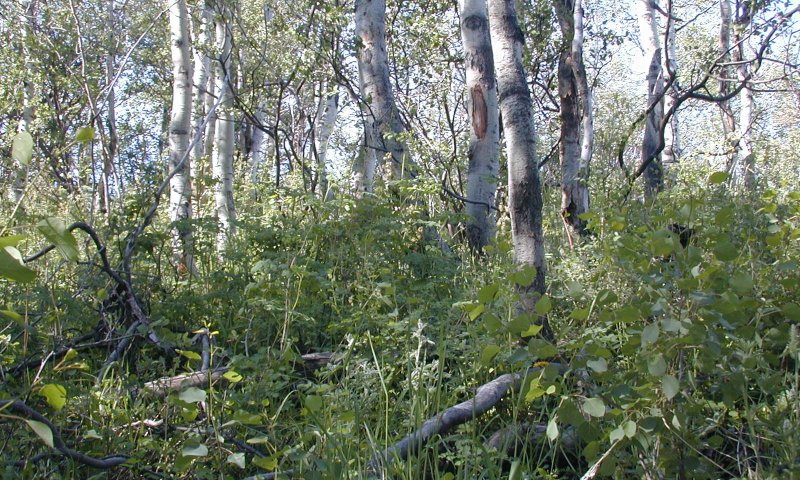
Figure 15. Aspen/Herbaceous Community Phase with a two story canopy of aspen, with a strong strata of aspen sprouts present in the under story.
Similar to reference, Community Phase 1.4 is a mature aspen stand, but with a dominant second over story layer of younger aspen samplings. Both strata of the over story are relatively healthy. The younger aspen are variable in age. The age of the main stand of aspen ranges from 30 to 70 years old. The tree canopy is between 70 to 90 percent. The variability in height and age alters the transparency of this canopy allowing for a dynamic under story canopy.
Resilience management. The relative health of both strata of the canopy and because of the dynamic of the aging of this tree stand, the community is relatively resilient to most disturbances and is resistant to major change.
Dominant plant species
-
quaking aspen (Populus tremuloides), tree
-
common juniper (Juniperus communis var. depressa), shrub
-
russet buffaloberry (Shepherdia canadensis), shrub
-
western snowberry (Symphoricarpos occidentalis), shrub
-
pinegrass (Calamagrostis rubescens), grass
-
Geyer's sedge (Carex geyeri), grass
-
California brome (Bromus carinatus), grass
-
heartleaf arnica (Arnica cordifolia), other herbaceous
-
Fendler's meadow-rue (Thalictrum fendleri var. fendleri), other herbaceous
-
timber milkvetch (Astragalus miser), other herbaceous
-
plantainleaf buttercup (Ranunculus alismifolius), other herbaceous
Pathway CP1.1-1.2
Community 1.1 to 1.2
Reference: Aspen/Herbaceous - Single Story
Reduction in the Aspen canopy is a factor of insect and/or disease, drought, or other disturbance. The loss of over story canopy (shading) allows the herbaceous under story to increase. The increased light accessing the under story encourages aspen cloning.
Pathway CP1.1-1.3
Community 1.1 to 1.3
Reference: Aspen/Herbaceous - Single Story
Wildland fire for stand replacement or forest stand management with fire and/or timber harvesting removes most of woody canopy in the community. Aspen sprouting occurs in response to the open canopy and increased sunlight. In the herbaceous under story, forbs typically respond first to the open canopy, with grasses following in the natural succession of the community.
| Upland Wildlife Habitat Management |
|
| Forest Stand Improvement |
|
| Prescribed Grazing |
|
| Forest Land Management |
|
| Grazing management to improve wildlife habitat |
|
| Patch-burning to enhance wildlife habitat |
|
| Forest stand improvement for habitat and soil quality |
|
| Forest stand improvement pre-treating vegetation and fuels |
|
| Forest Stand Improvement, Prescribed burning |
|
Pathway CP1.2-1.4
Community 1.2 to 1.4
Aspen/Herbaceous - Multi-story
Time for aspen to grow and mature with proper grazing to allow for under story growth provides a mechanism for the Herbaceous/Aspen community to transition to the Aspen/Herbaceous community.
| Upland Wildlife Habitat Management |
|
| Planned Grazing System |
|
| Prescribed Grazing |
|
| Forest Land Management |
|
Pathway CP1.3-1.4
Community 1.3 to 1.4
Aspen/Herbaceous - Multi-story
Time for aspen to grow and mature with proper grazing to allow for under story growth provides a mechanism for the Aspen Sprout community to transition to the Aspen/Herbaceous community.
| Prescribed Grazing |
|
| Upland Wildlife Habitat Management |
|
| Forest Stand Improvement |
|
Pathway CP1.4-1.1
Community 1.4 to 1.1
Aspen/Herbaceous - Multi-story
Reference: Aspen/Herbaceous - Single Story
Time and proper grazing allows the aspen to mature while encouraging aspen sprouting. Using timber harvest or forest stand improvement techniques to manage stand health and providing longevity of the stand allows for the old growth trees to gain in size and stature. Proper grazing allows for a healthy under story.
| Prescribed Grazing |
|
| Upland Wildlife Habitat Management |
|
| Prescribed Grazing |
|
| Forest Land Management |
|
| Prescribed Forestry |
|
| Patch-burning to enhance wildlife habitat |
|
| Forest stand improvement for habitat and soil quality |
|
| Wildlife corridors |
|
| Forest stand improvement pre-treating vegetation and fuels |
|
| Forest Stand Improvement to Reduce Wildfire Risk |
|
State 2
Conifer Encroachment
The Aspen canopy provides opportunity for conifer species to remain, especially those species that are somewhat shade tolerant. Subalpine fir is one of those species that can tolerate the shade within the aspen community and then thrive once the canopy deteriorates.
Characteristics and indicators. This state is identified by the loss of Aspen, with less than 10 percent remaining in the stand, and an increase in conifer species. The conifers can be a mix, but subalpine fir in upper elevations, engelman spruce in central elevations and Douglas-fir in lower elevations tend to be the dominant species encroaching in on this community/State.
Resilience management. This state is relatively resistant to change, but in the face of fire or following timber management to remove the unwanted conifer cover, the state will revert to a reference state with time and proper grazing management.
Dominant plant species
-
subalpine fir (Abies lasiocarpa), tree
-
Douglas-fir (Pseudotsuga menziesii), tree
-
Engelmann spruce (Picea engelmannii), tree
-
quaking aspen (Populus tremuloides), tree
-
russet buffaloberry (Shepherdia canadensis), shrub
-
common juniper (Juniperus communis var. depressa), shrub
-
creeping barberry (Mahonia repens), shrub
-
mountain snowberry (Symphoricarpos oreophilus), shrub
-
pinegrass (Calamagrostis rubescens), grass
-
Geyer's sedge (Carex geyeri), grass
-
California brome (Bromus carinatus), grass
-
common cowparsnip (Heracleum maximum), other herbaceous
-
western coneflower (Rudbeckia occidentalis), other herbaceous
-
mule-ears (Wyethia amplexicaulis), other herbaceous
-
timber milkvetch (Astragalus miser), other herbaceous
-
Fendler's meadow-rue (Thalictrum fendleri var. fendleri), other herbaceous
Dominant resource concerns
-
Plant productivity and health
-
Plant structure and composition
-
Wildfire hazard from biomass accumulation
-
Terrestrial habitat for wildlife and invertebrates
-
Feed and forage imbalance
Community 2.1
Conifer/<10% Aspen Cover

Figure 16. Dense strata of conifers in the over story of old growth aspen.
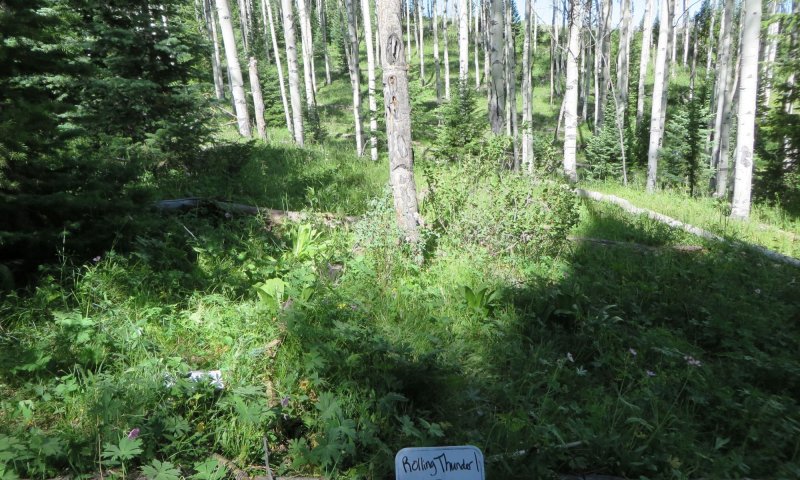
Figure 17. Conifer encroachment in the over story of aspen.
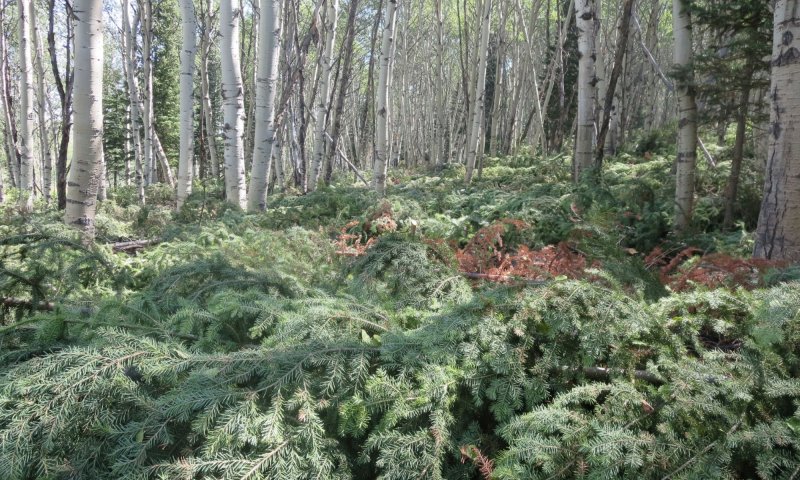
Figure 18. Forest stand improvement project to remove conifers from an aspen stand.
Woody vegetation is the dominant cover for the Conifer Enroachment State. For this community phase, Aspens maintain less than 10 percent of the canopy cover; while conifers, largely subalpine fir, have taken over the rest of the community. Under story vegetation is still present but in varying composition.
Resilience management. This site will continue to degrade until fire or other means of timber management occur to reduce the conifer composition within the woody strata. Aspen regeneration is hindered within this community phase. The community is still resilient, in that as the conifers are removed, the aspen are able to respond and recover as is the herbaceous under story.
Dominant plant species
-
subalpine fir (Abies lasiocarpa), tree
-
Douglas-fir (Pseudotsuga menziesii), tree
-
Rocky Mountain juniper (Juniperus scopulorum), tree
-
quaking aspen (Populus tremuloides), tree
-
russet buffaloberry (Shepherdia canadensis), shrub
-
western snowberry (Symphoricarpos occidentalis), shrub
-
creeping barberry (Mahonia repens), shrub
-
pinegrass (Calamagrostis rubescens), grass
-
Geyer's sedge (Carex geyeri), grass
-
Sandberg bluegrass (Poa secunda), grass
-
arnica (Arnica), other herbaceous
-
Fendler's meadow-rue (Thalictrum fendleri var. fendleri), other herbaceous
-
timber milkvetch (Astragalus miser), other herbaceous
State 3
Herbaceous
Deterioration of the Aspen community with age, disease, or over grazing by wildlife or livestock leads to the loss of the aspen under story as well as the herbaceous under story may be reduced to a select few species.
Characteristics and indicators. The Herbaceous State is characterized by the lack of Aspens in a community with a herbaceous under story. Remnant populations of old Aspens may still be present, but no young or producing Aspen are present in the community. The herbaceous is variable, but is generally limited to a few native grass/grass-like species and forbs.
Resilience management. Density of remaining herbaceous cover has proven to resist encroachment of other species, and serves to restrict the regeneration of Aspens, however with time and continued disturbance by grazing, logging or drought, this State becomes more susceptible to encroachment by conifer species or non-native species. Proper management and rest can help with transitioning this site back to reference.
Dominant plant species
-
mountain big sagebrush (Artemisia tridentata ssp. vaseyana), shrub
-
western snowberry (Symphoricarpos occidentalis), shrub
-
common juniper (Juniperus communis var. depressa), shrub
-
russet buffaloberry (Shepherdia canadensis), shrub
-
pinegrass (Calamagrostis rubescens), grass
-
Letterman's needlegrass (Achnatherum lettermanii), grass
-
Geyer's sedge (Carex geyeri), grass
-
California brome (Bromus carinatus), grass
-
silvery lupine (Lupinus argenteus), other herbaceous
-
mule-ears (Wyethia amplexicaulis), other herbaceous
-
western coneflower (Rudbeckia occidentalis), other herbaceous
-
heartleaf arnica (Arnica cordifolia), other herbaceous
-
timber milkvetch (Astragalus miser), other herbaceous
Dominant resource concerns
-
Sheet and rill erosion
-
Compaction
-
Plant productivity and health
-
Plant structure and composition
-
Wildfire hazard from biomass accumulation
-
Terrestrial habitat for wildlife and invertebrates
-
Inadequate livestock shelter
Community 3.1
Herbaceous/No Aspen
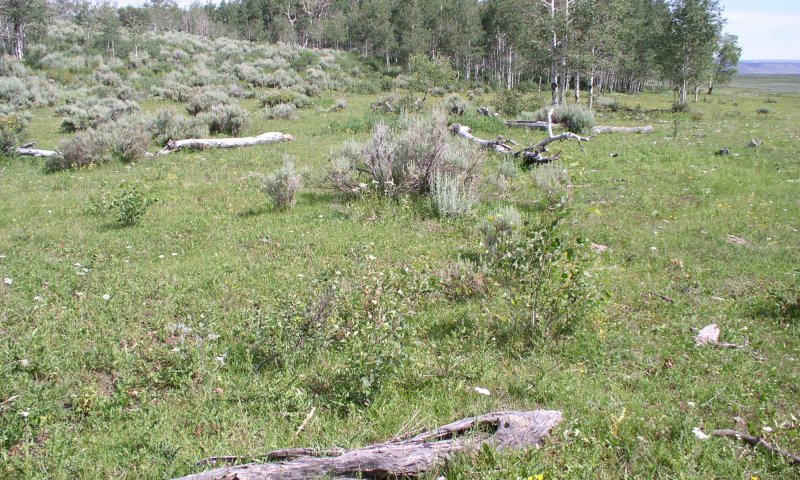
Figure 19. The herbaceous cover and shrub cover of a degraded aspen community (Herbaceous/No Aspen community phase) is easily mistaken for upland shrubland communities. (Photo: K. Clause)
Loss of the aspen over story with an increase in the herbaceous under story is the key dynamic of this community phase. With the lack of any substantial growth of aspen, this community will function similar to its shrub/grassland counterpart. However, the potential for aspen recovery is high.
Resilience management. This community is resilient, and able to recover given the time to recover with protection from grazing/browsing of young aspen sprouts. The herbaceous cover inhibits aspen growth and so this community can be relatively resistant to change without some disturbance to the herbaceous cover.
Dominant plant species
-
western snowberry (Symphoricarpos occidentalis), shrub
-
mountain big sagebrush (Artemisia tridentata ssp. vaseyana), shrub
-
Woods' rose (Rosa woodsii), shrub
-
Letterman's needlegrass (Achnatherum lettermanii), grass
-
California brome (Bromus carinatus), grass
-
pinegrass (Calamagrostis rubescens), grass
-
plantainleaf buttercup (Ranunculus alismifolius), other herbaceous
-
western coneflower (Rudbeckia occidentalis), other herbaceous
-
mule-ears (Wyethia amplexicaulis), other herbaceous
-
timber milkvetch (Astragalus miser), other herbaceous
State 4
Invaded
The Invaded State for the Upland Aspen Woodland ecological site typically productive and maintain function for livestock forage and for habitat. The shift in herbaceous species can lower the quality of forage, but in some instances will make the system more resistant to change during drought, intensive grazing use, or other unforeseen impact. But there is a cost to the system as well in the loss of resiliency to these impacts.
Characteristics and indicators. Kentucky bluegrass and smooth brome are the two most dominant invaders across the scope of the ecolgoical site. Other invaders including thistle, houndstongue, and knapweed have been identified in these wooded sites. As the invaders increase, Aspen will decline in the community. There is debate on where the threshold for invasion occurs, whether it is at the first sign of any non-native species or if it occurs after a determined composition. This threshold should be taken on a by species basis, but to simplify for the case of this ecological site, if there is 10 percent or greater composition by cover, the ecological site is invaded.
Resilience management. Resiliency of this site is dependent on maintaining the health and quality of the native species, especially the aspens themselves, while striving to reduce or remove the invasive species. The aggressive nature and ability to compete for limited resources allows an invaded community to recovery after intense use, major disturbances including drought and fire (species dependent), or following logging.
Dominant plant species
-
quaking aspen (Populus tremuloides), tree
-
mountain big sagebrush (Artemisia tridentata ssp. vaseyana), shrub
-
russet buffaloberry (Shepherdia canadensis), shrub
-
mountain snowberry (Symphoricarpos oreophilus), shrub
-
common juniper (Juniperus communis var. depressa), shrub
-
pinegrass (Calamagrostis rubescens), grass
-
Kentucky bluegrass (Poa pratensis), grass
-
smooth brome (Bromus inermis), grass
-
timothy (Phleum pratense), grass
-
tufted hairgrass (Deschampsia cespitosa), grass
-
Fendler's meadow-rue (Thalictrum fendleri var. fendleri), other herbaceous
-
mule-ears (Wyethia amplexicaulis), other herbaceous
-
common cowparsnip (Heracleum maximum), other herbaceous
-
timber milkvetch (Astragalus miser), other herbaceous
-
thistle (Cirsium), other herbaceous
-
gypsyflower (Cynoglossum officinale), other herbaceous
Dominant resource concerns
-
Compaction
-
Aggregate instability
-
Plant productivity and health
-
Plant structure and composition
-
Wildfire hazard from biomass accumulation
-
Terrestrial habitat for wildlife and invertebrates
Community 4.1
Invaded Understory

Figure 20. Kentucky bluegrass is the dominant grass cover of this Aspen community.
This community phase can resemble many of the other states and communities with variations in aspen cover and degrees of conifer encroachment. The major factor of this community phase is simply the significant presence (greater than 10% composition by cover) of a non-native, invasive species such as Kentucky bluegrass.
Resilience management. The challenge of eradicating or reducing non-native/invader species from these communities creates a resilient community that is resistant to change. Shifts and improvements in herbaceous cover can be achieved by there are risks to the native species.
Dominant plant species
-
quaking aspen (Populus tremuloides), tree
-
common juniper (Juniperus communis var. depressa), shrub
-
mountain big sagebrush (Artemisia tridentata ssp. vaseyana), shrub
-
western snowberry (Symphoricarpos occidentalis), shrub
-
Kentucky bluegrass (Poa pratensis), grass
-
smooth brome (Bromus inermis), grass
-
Sandberg bluegrass (Poa secunda), grass
-
heartleaf arnica (Arnica cordifolia), other herbaceous
-
mule-ears (Wyethia amplexicaulis), other herbaceous
-
timber milkvetch (Astragalus miser), other herbaceous
Transition T1-2
State 1 to 2
Fire suppression, especially with severe grazing by livestock and/or wildlife encourage the encroachment of conifer species. The pressure of the conifer species inhibits the cloning ability of aspen, and disease and insect impacts successfully decline or remove aspen from the community. Subalpine fir, Rocky mountain juniper, Douglas-fir, and white bark pine can be found in the over story.
Constraints to recovery. Removal of the conifer under story can be labor intensive or risky if fire is used depending on the location specifics. Once conifers are removed, reducing the risk of grazing impacts and browsing on young aspen saplings until the site is established and able to tolerate the use is key to allowing the site to recover.
Transition T1-3
State 1 to 3
Lack of fire and frequent, season long grazing (severe defoliation) by livestock and wildlife, the ability for aspen to clone or regenerate is reduced. Aspens are impacted by disease and insects more readily as they are stressed, and begin to decline in the over story. The herbaceous species in the under story will decline in diversity and become limited in number of species, but will maintain cover.
Constraints to recovery. The ability to reduce grazing impacts, especially by wildlife, can be difficult depending on the specific characteristics of a location. Once aspen has declined or been removed from the community, it can be challenging to invigorate regrowth of aspen. Providing time for recovery post fire, or limiting use of the the community until it has recovered is critical.
Transition T1-4
State 1 to 4
Repeated severe grazing without a period of recovery or during time when the community is fragile, especially with a seed source present, opens this community to invasive plant species. Catastrophic fire, especially in combination with drought, improper grazing, or other disturbance leads to an invaded community when the seed sources are present.
Constraints to recovery. The inability to reduce or remove most of the invasive species, specifically Kentucky bluegrass and smooth brome, without adversely impacting most native species limits the ability to recover this site. Without reducing the overall canopy of the herbaceous under story, Aspen have minimal chance of a full recovery, and the under story is currently thought to be irreversible.
Restoration pathway R2-1
State 2 to 1
Grazing management, with a rest rotation preferred, and removal of the conifer over story will allow aspen to recover on this site. Time for aspen recovery and targeted grazing to enhance the under story cover is needed to restore this community to the Reference State. Temporary exclusion from the community to allow aspen to regenerate may be necessary. The use of down fall or the conifer cuttings is one technique to limit access to allow aspen regrowth.
| Prescribed Grazing |
|
| Grazing Land Mechanical Treatment |
|
| Upland Wildlife Habitat Management |
|
| Livestock Use Area Protection |
|
| Forest Land Management |
|
| Patch-burning to enhance wildlife habitat |
|
| Forest stand improvement for habitat and soil quality |
|
| Wildlife corridors |
|
| Forest stand improvement pre-treating vegetation and fuels |
|
| Forest Stand Improvement to Reduce Wildfire Risk |
|
Restoration pathway R3-1
State 3 to 1
Grazing management with time allowed for aspen regeneration is key for the restoration of this site back to reference. Temporary exclusion from aspen community or the use of downfall to limit access by both livestock and wildlife is pertinent to allowing aspen to regenerate.
| Prescribed Grazing |
|
| Grazing Land Mechanical Treatment |
|
| Heavy Use Area Protection |
|
| Forest Stand Improvement |
|
| Prescribed Grazing |
|
| Grazing management to improve wildlife habitat |
|
| Patch-burning to enhance wildlife habitat |
|
| Forest stand improvement for habitat and soil quality |
|
| Wildlife corridors |
|


